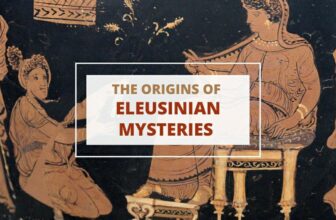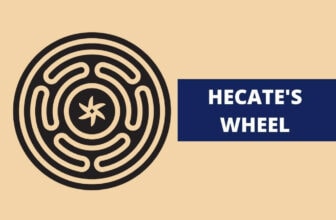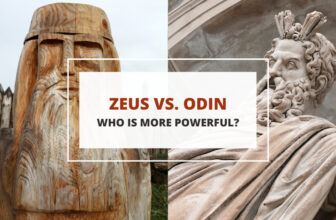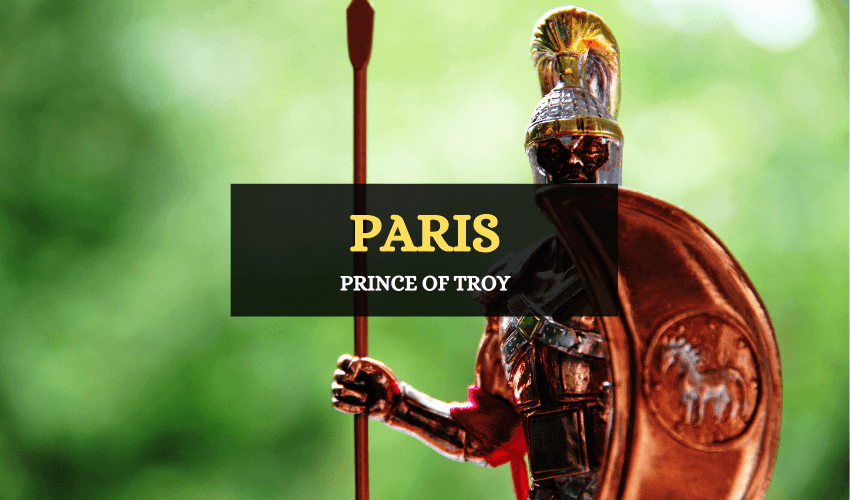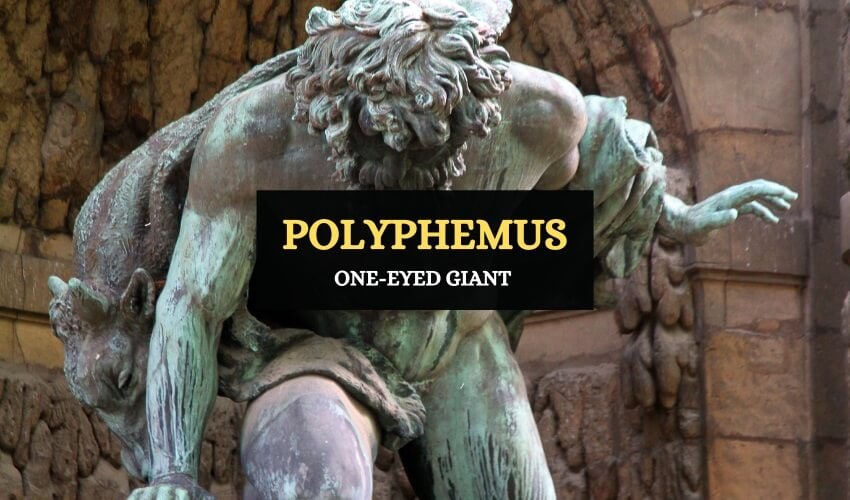
Table of Contents
Polyphemus was a one-eyed giant belonging to the Cyclopes family in Greek mythology. He was a large and magnificent being, with an eye in the middle of his forehead. Polyphemus became the leader of the second-generation Cyclopes, due to his immense strength and intelligence. In some Greek myths, Polyphemus is represented as a savage monster, while in others, he’s characterized as a benevolent and witty being. Let’s take a closer look at Polyphemus, the one-eyed legend.
Origins of Polyphemus
The myth of Polyphemus can be traced back to numerous cultures and traditions. One of the oldest versions of Polyphemus’ story may have originated in Georgia. In this narrative, a one-eyed giant held a group of men hostage, and they managed to free themselves by stabbing the captor in the eye with a wooden stake.
This account was later adapted and reimagined by the Greeks as the myth of Polyphemus. According to the Greeks, a one-eyed giant, named Polyphemus was born to the sea god Poseidon and Thoosa. Polyphemus plays a minor role in Greek mythology, appearing in some myths. However, his most important role is as antagonist of Odysseus and his men.
Polyphemus and Odysseus
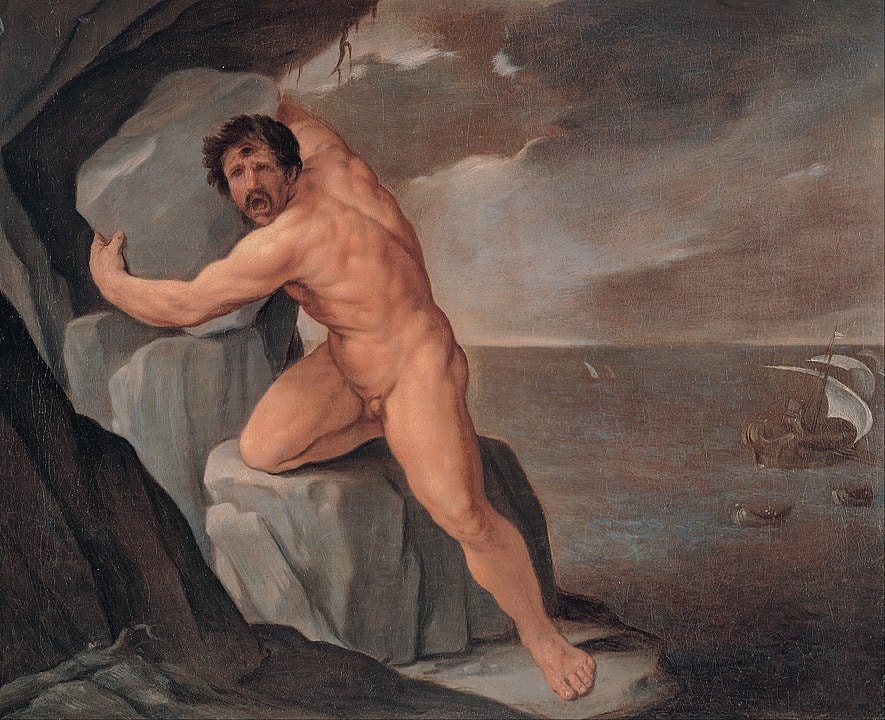
The most popular incident of Polyphemus’ life was the confrontation with Odysseus, the Trojan war hero. Odysseus and his soldiers accidentally strayed into the cave of Polyphemus, without knowing to whom it belonged. Not wanting to give up a wholesome meal, Polyphemus sealed his cave with a rock, trapping Odysseus and his soldiers inside.
Polyphemus satiated his hunger by eating a few men every day. The giant was only stalled, when the brave Odysseus handed him a strong cup of wine and got him drunk. Grateful for the gift, Polyphemus drank the spirit and promised a reward to the patron. But for this, Polyphemus had to know the brave soldier’s name. Not wanting to give away his true identity, the intelligent Odysseus’ stated that he was called “Nobody”. Polyphemus then promised that he would eat this “Nobody” at the very end.
As Polyphemus fell into a deep slumber, Odysseus quickly acted, driving a wooden stake into his single eye. Polyphemus struggled and screamed, that “Nobody” was hurting him, but the other giants were confused and didn’t understand him. So, they didn’t come to his aid.
After blinding the giant, Odysseus and his men escaped from the cave by clinging onto the underside of Polyphemus’ sheep. When Odysseus reached his ship, he proudly revealed his original name, but this proved to be a grave mistake. Polyphemus asked his father Poseidon to punish Odysseus and his men for what they had done to him. Poseidon obliged by sending rough winds and making the journey back to Ithaca fraught with difficulties.
As a result of his encounter with Polyphemus, Odysseus and his men would end up wandering for years on the seas trying to find their way back to Ithaca.
Polyphemus and Galatea
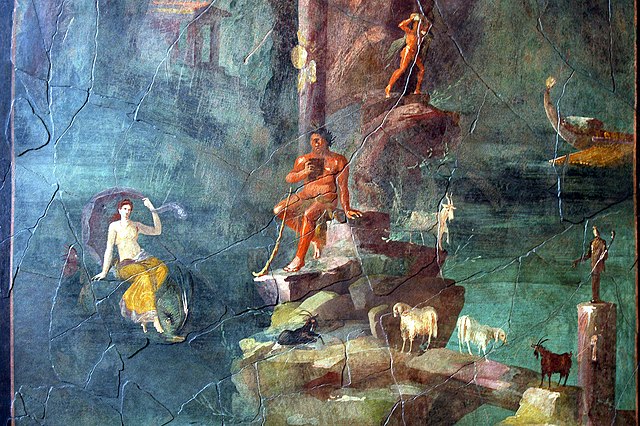
There is also another popular myth featuring Polyphemus. The story of Polyphemus and the sea nymph, Galatea, has been narrated by several poets and writers. While some writers describe their love as a success, others indicate that Polyphemus was rejected by Galatea.
Irrespective of the love’s success or failure, all these stories represent Polyphemus as an intelligent being, who uses his musical skills to woo the beautiful sea nymph. This depiction of Polyphemus is starkly different from earlier poets, for whom he was nothing more than a savage beast.
According to some narratives, Polyphemus’ love is reciprocated by Galatea, and they overcome many challenges to be together. Galatea gives birth to Polyphemus’ children – Galas, Celtus and Illyruis. The offspring of Polyphemus and Galatea are believed to be distant ancestors of the Celts.
Contemporary writers have added a new twist to the Polyphemus and Galatea love story. According to them, Galatea could never return Polyphemus’ love, as her heart belonged with another man, Acis. Polyphemus killed Acis out of jealousy and rage. Acis was then turned by Galatea into a spirit of the Sicilian river.
Although there are several contradictory narratives on the love between Polyphemus and Galatea, it can certainly be said that the giant was reimagined and reinterpreted in these stories.
Symbolism of Polyphemus

Polyphemus’ role as an antagonist and a primitive creature that can easily be bested is imbued with symbolism. Here are some of the concepts that he can be seen as representing.
- Representation of Barbarism: Polyphemus represents uncivilized and barbaric behavior, which is put into sharp contrast against the cultured and sophisticated Greeks. The Cyclops disregards the traditional Greek value of hospitality (xenia), demonstrating the contrast between the civilized Greeks and the wild, uncivilized creatures they encounter on their journeys.
- Challenge to Odysseus’ Wit and Leadership: The encounter with Polyphemus is one of the most iconic adventures in Odysseus’ journey. It showcases Odysseus’ cleverness, as he devises a plan to blind the Cyclops and escape from his cave. This episode reinforces the theme that intelligence and wit can triumph over brute strength.
- Consequences of Arrogance: After successfully escaping from the Cyclops’ cave, Odysseus taunts Polyphemus and reveals his true name. This act of pride leads Polyphemus to pray to his father, Poseidon, to curse Odysseus. This curse becomes a significant factor in the prolongation of Odysseus’ journey home, making the Cyclops’ episode pivotal to the narrative of the “Odyssey.”
- Connection to Poseidon: The revelation that Polyphemus is the son of Poseidon, the god of the sea, establishes a direct link between Odysseus’ actions and the wrath of a major deity. Poseidon’s anger at Odysseus for blinding his son results in many of the subsequent challenges and delays that Odysseus faces on his return to Ithaca.
Polyphemus Moth
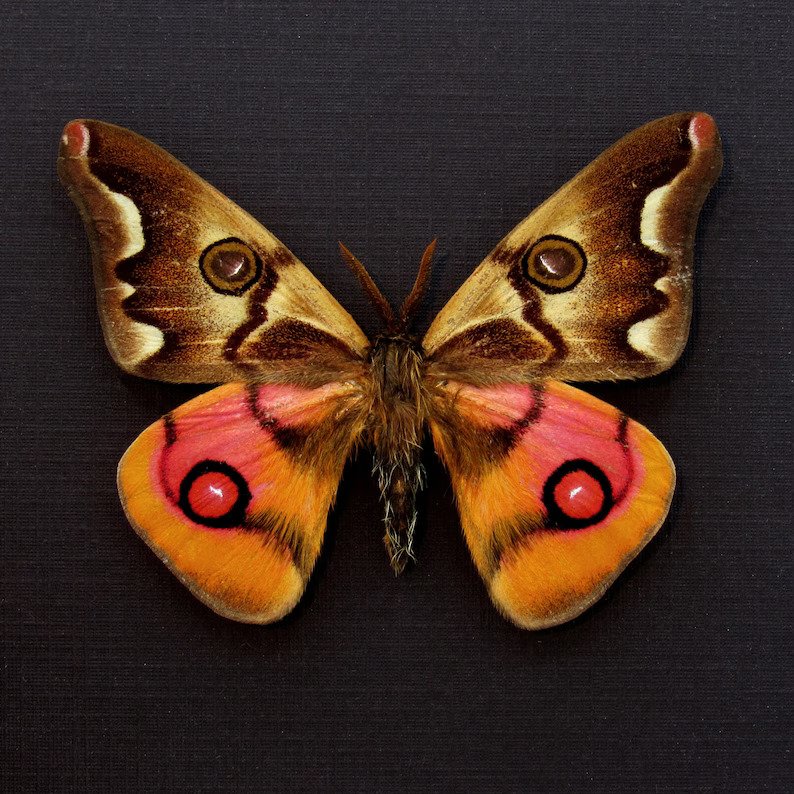
The Polyphemus moth is one of the largest moth species in America. What makes this moth stand out is its large, purplish eyespots on its hindwings. When the moth feels threatened, it flashes its hindwings, making the eyespots appear alive and threatening.
The moth is named after Polyphemus, the one-eyed Cyclops from Greek mythology. The name is a nod to the large, eye-like spots on the moth’s wings. It’s a bit ironic, considering Polyphemus had only one eye and the moth has multiple eyespots, but the standout “eye” appearance is the likely inspiration for the name.
Cultural Representations of Polyphemus
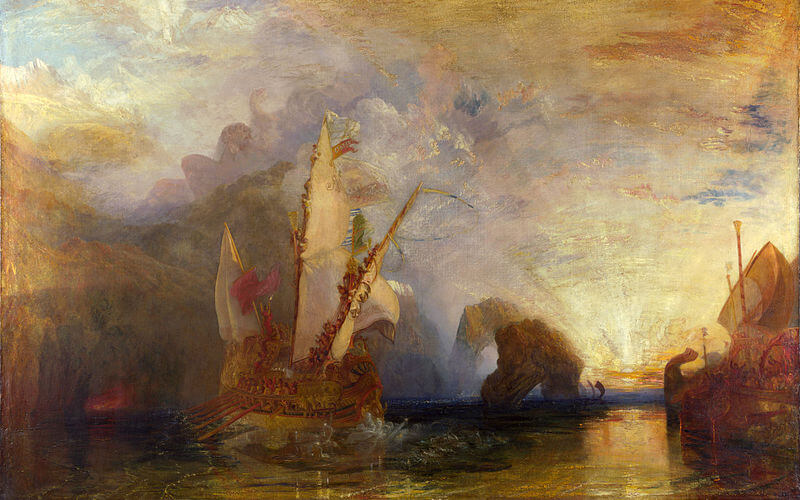
Polyphemus has been represented in diverse ways in sculptures, paintings, movies, and art. Some artists have shown him as a terrifying monster, and others, as a benevolent being.
Painter Guido Reni, visualized the violent side of Polyphemus, in his art piece Polyphemus. Contrarily, J. M. W. Turner depicted Polyphemus as a small and defeated figure, in his painting Ulysses Deriding Polyphemus, Ulysses being the Roman equivalent for Odysseus.
While paintings showed the emotional turmoil of Polyphemus, frescoes and murals dealt with a different aspect of his life. In a fresco in Pompeii, Polyphemus is depicted with a winged cupid, who hands him a love letter from Galatea. Additionally, in another fresco, Polyphemus and Galatea are shown as lovers, in a tight embrace.
There are also several movies and films which depict the confrontation between Polyphemus and Odysseus, such Ulysses and the Giant Polyphemus directed by Georges Méliès, and the film Ulysses, based on Homer’s epic.
In Brief
The myth of Polyphemus is a popular story, gaining prominence after its appearance in Book 9 of Homer’s Odyssey. While the accounts of Polyphemus vary, in today’s world, he continues to be an inspiration for several modern writers and artists.
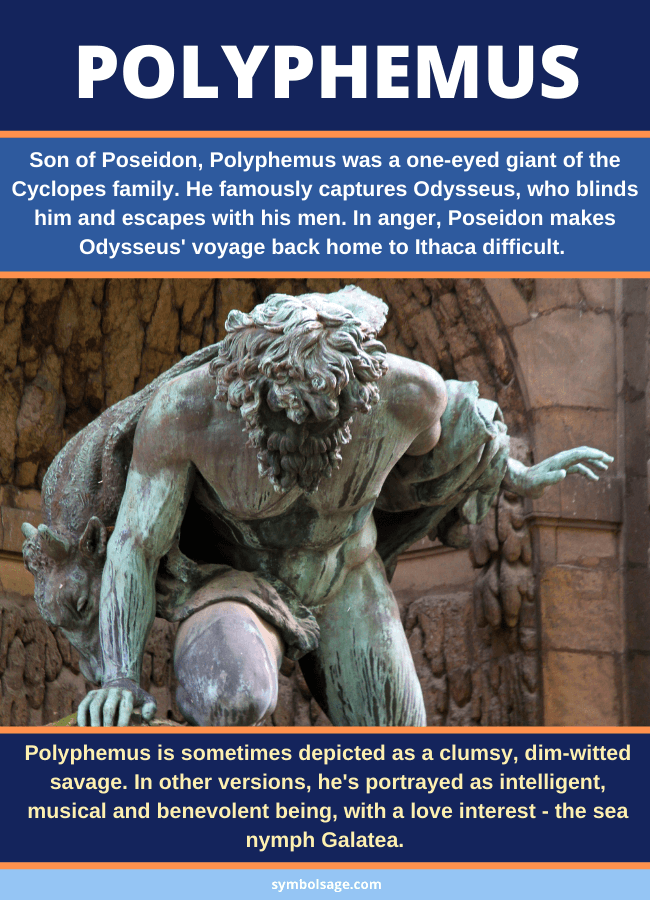
Related articles
Paris of Troy: Love, War, and Tragic Destiny
Argonauts: The Band of Valiant Greek Heroes
Pygmalion: Greek Sculptor of Galatea
Zethus: Founder and Ruler of Thebes
Endymion: The Mortal Who Captured a Goddess’s Heart




